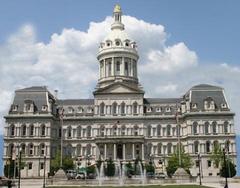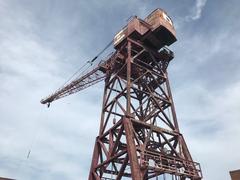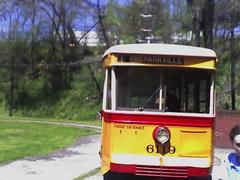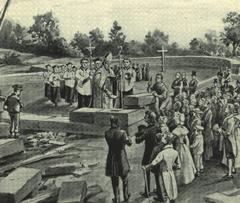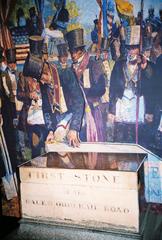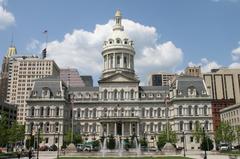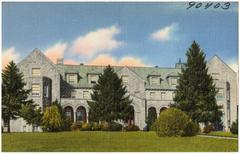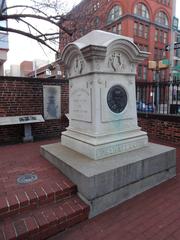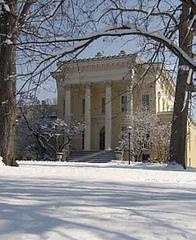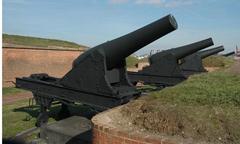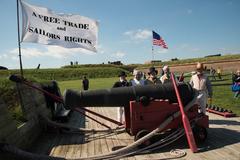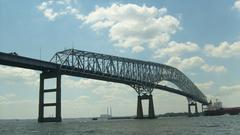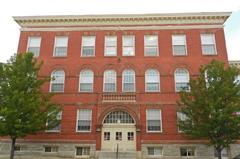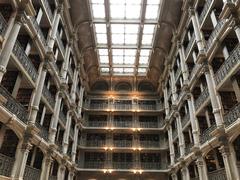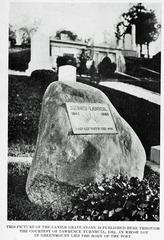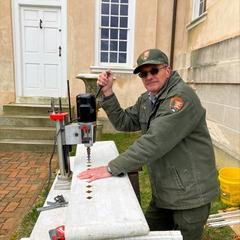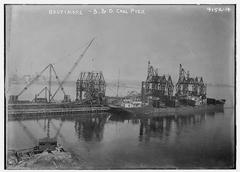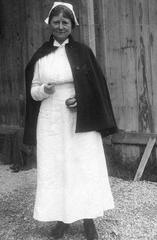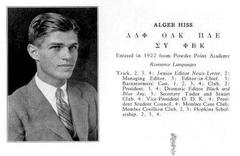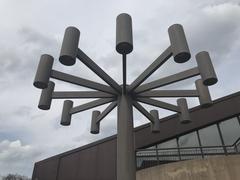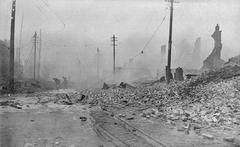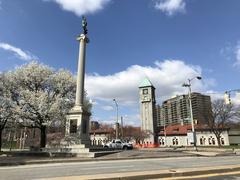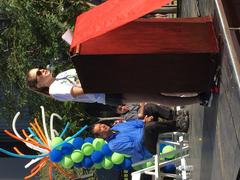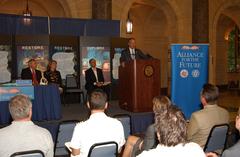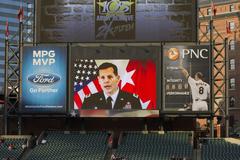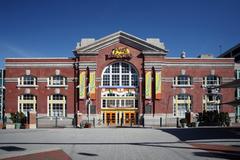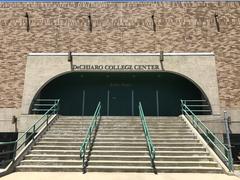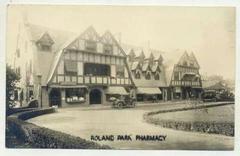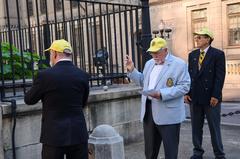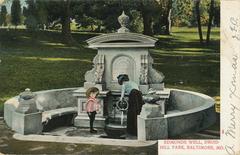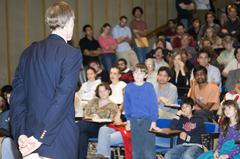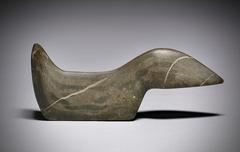Visiting Church Home and Hospital Baltimore: Historical Site Guide, Tickets, Hours, and Tips
Date: 04/07/2025
Introduction
Church Home and Hospital in Baltimore, Maryland, is a landmark deeply woven into the city’s medical, cultural, and literary history. Established in the 19th century and revitalized by the Episcopal Church in 1857, it served as a cornerstone for healthcare access among Baltimore’s underserved communities. The hospital is especially notable as the place where Edgar Allan Poe spent his final days in 1849, making it a site of pilgrimage for literary enthusiasts. Although the hospital closed in the late 20th century, its legacy endures through its role in nursing education, civil rights progress, and the city’s healthcare evolution. Today, the site is integrated into the Johns Hopkins School of Nursing campus and the Broadway Overlook residential community, yet it continues to draw visitors interested in Baltimore’s dynamic past. This guide provides a comprehensive overview of Church Home and Hospital’s history, its significance, practical visiting information, and tips for making the most of your visit. For further research and exploration, institutions such as the Maryland State Archives and Baltimore City Historical Society offer extensive archival resources. (Maryland State Archives, Baltimore City Historical Society, WikiMD)
Table of Contents
- Introduction
- Early Foundations and Origins
- Architectural and Institutional Development
- Historical Significance and Notable Events
- Role in Medical Education and Nursing
- Social Impact and Community Service
- Segregation, Desegregation, and Civil Rights
- Decline, Closure, and Legacy
- Practical Visitor Information
- Visuals and Media Recommendations
- Frequently Asked Questions (FAQ)
- Related Baltimore Historical Sites
- Conclusion and Call to Action
Early Foundations and Origins
Church Home and Hospital’s roots date to the early 19th century, a period marked by rapid urbanization and public health challenges in Baltimore. Originally opened in 1836 as Washington College Hospital (Maryland State Archives), it addressed a growing population’s needs amid frequent epidemics and limited healthcare infrastructure. After a brief closure in 1851, the hospital was reborn in 1857 as Church Home and Infirmary, led by Episcopal Church leaders. Its foundational mission focused on charitable care, serving Baltimore’s poor and immigrant communities without regard to ability to pay.
Architectural and Institutional Development
From humble beginnings, the hospital expanded into a complex of modern wards, surgical theaters, and specialized departments by the late 19th century. Its East Baltimore location was notable for distinctive institutional architecture and for its functions as a training ground for nurses and physicians. Over the decades, the hospital grew in scope and sophistication, reflecting advancements in medical practice and public health.
Historical Significance and Notable Events
Church Home and Hospital is perhaps most famously known as the site where Edgar Allan Poe spent his last days in 1849 (Maryland State Archives). This association has made it a point of interest for literary historians and fans alike. Beyond Poe, the hospital played crucial roles during public health crises, such as cholera and influenza outbreaks, providing vital care to Baltimore’s most vulnerable residents.
Role in Medical Education and Nursing
A pioneer in professionalizing nursing and medical education, the hospital established a training school for nurses and maintained affiliations with local medical colleges. Its School for Nurses, founded in 1894, became an important institution for elevating nursing standards in Maryland, offering a rigorous three-year program and specialized training in partnership with Johns Hopkins (WikiMD, Johns Hopkins Medical Archives).
Social Impact and Community Service
Church Home and Hospital was deeply embedded in Baltimore’s civic life, providing free or low-cost care during periods of intense immigration and economic hardship. Its unwavering presence in East Baltimore, even as other institutions relocated, was critical for community health and stability.
Segregation, Desegregation, and Civil Rights
Reflecting the broader societal context, Church Home and Hospital operated as a racially segregated institution until the mid-20th century. The civil rights movement and local activism led to the desegregation of staff and patients in the 1960s, marking a pivotal moment in the hospital’s legacy and in Baltimore’s healthcare history (Baltimore City Historical Society).
Decline, Closure, and Legacy
Healthcare industry changes and financial pressures led to the hospital’s closure in the late 20th century. Following its closure, the property was redeveloped into the Johns Hopkins School of Nursing campus and the Broadway Overlook residential community, playing a role in the redevelopment of the Washington Hill neighborhood (Wikipedia). Despite its closure, the hospital’s legacy endures through its medical innovations, the professionals it trained, and its ongoing recognition in Baltimore’s historical narrative.
Practical Visitor Information
Visiting Hours and Access
The original hospital buildings are no longer operational as a healthcare facility and are not open to the public. Visitors may view the exterior from public sidewalks during daylight hours; there are no tickets or entrance fees required for this experience.
Accessibility
The site is accessible via public transportation, with several bus routes serving the Washington Hill area. While sidewalks are pedestrian-friendly, visitors should note that access to the interior is restricted as the buildings are now part of the Johns Hopkins School of Nursing and private residences.
Guided Tours and Events
There are currently no official guided tours of the Church Home and Hospital site. However, local historical societies and walking tour providers may include the site as part of broader Baltimore history or literary tours. Check with local organizations for upcoming events or special programs.
Travel Tips
- Combine your visit with nearby attractions such as the Edgar Allan Poe House and Museum, Johns Hopkins Hospital, and Patterson Park.
- Use public transportation or nearby parking garages for convenience.
- Respect the privacy of residents and institutional spaces when exploring the area.
Visuals and Media Recommendations
- View archival images and virtual tours through the Maryland Historical Society (Maryland Historical Society Digital Resource).
- Photographs of the hospital’s exterior, historic façade, and Broadway Overlook development offer visual context.
- Interactive maps and videos highlighting Baltimore’s medical and literary sites can enrich your visit.
Frequently Asked Questions (FAQ)
Q: Can I tour the Church Home and Hospital buildings?
A: No, the buildings are not open to the public, as they are now part of the Johns Hopkins School of Nursing and private residences.
Q: Are there any tickets or entrance fees?
A: No, viewing the exterior is free and open during daylight hours.
Q: Is the site accessible for people with disabilities?
A: The surrounding sidewalks are generally accessible, but there are no on-site amenities.
Q: What are the best nearby attractions?
A: Consider visiting the Edgar Allan Poe House and Museum, Johns Hopkins Hospital, Patterson Park, and the Inner Harbor.
Q: Where can I find more historical information or images?
A: The Maryland Historical Society, Johns Hopkins Medical Archives, and WikiMD provide extensive resources.
Related Baltimore Historical Sites
- Edgar Allan Poe House and Museum
- Johns Hopkins Hospital (see our [Johns Hopkins Hospital History] article)
- Patterson Park (see our [Patterson Park Visitor Guide])
- Baltimore Civil Rights Museum
Conclusion and Call to Action
Church Home and Hospital stands as a testament to Baltimore’s heritage of healthcare innovation, social justice, and cultural memory. Though no longer functioning as a hospital, its story continues to inspire those interested in medicine, literature, and community history. Plan your visit to the site’s exterior, explore nearby attractions, and deepen your understanding of Baltimore’s complex past. For enhanced experiences, download the Audiala app for curated guides and updates. Stay engaged with local historical societies and check our platform for more on Baltimore’s historic sites.
Summary and Final Tips
Church Home and Hospital remains an emblematic site reflecting Baltimore’s commitment to healthcare, social justice, and cultural legacy. While interior access is restricted, visitors can respectfully explore the grounds and nearby attractions. For a deeper experience, utilize resources like the Maryland Historical Society archives and local walking tours. Stay informed about related historical sites and events through the Audiala app and local organizations. Church Home and Hospital’s layered history continues to bridge Baltimore’s past and present. (Maryland Historical Society, Atlas Obscura, Wikipedia)
References and Additional Resources
- Maryland State Archives
- WikiMD
- Wikipedia
- DBpedia
- Johns Hopkins Medical Archives
- Baltimore City Historical Society
- Maryland Historical Society Digital Resource
- Atlas Obscura

